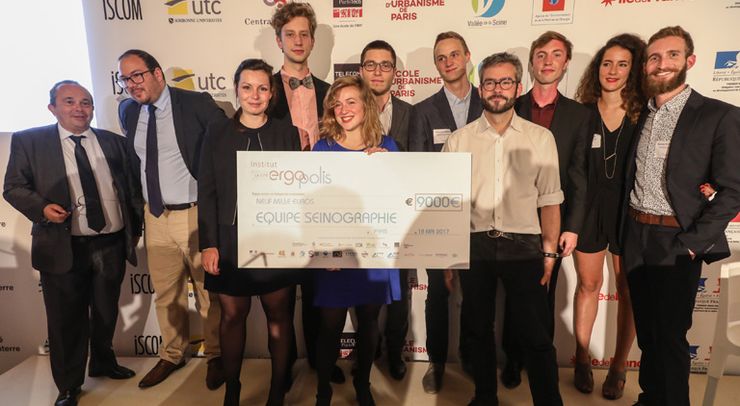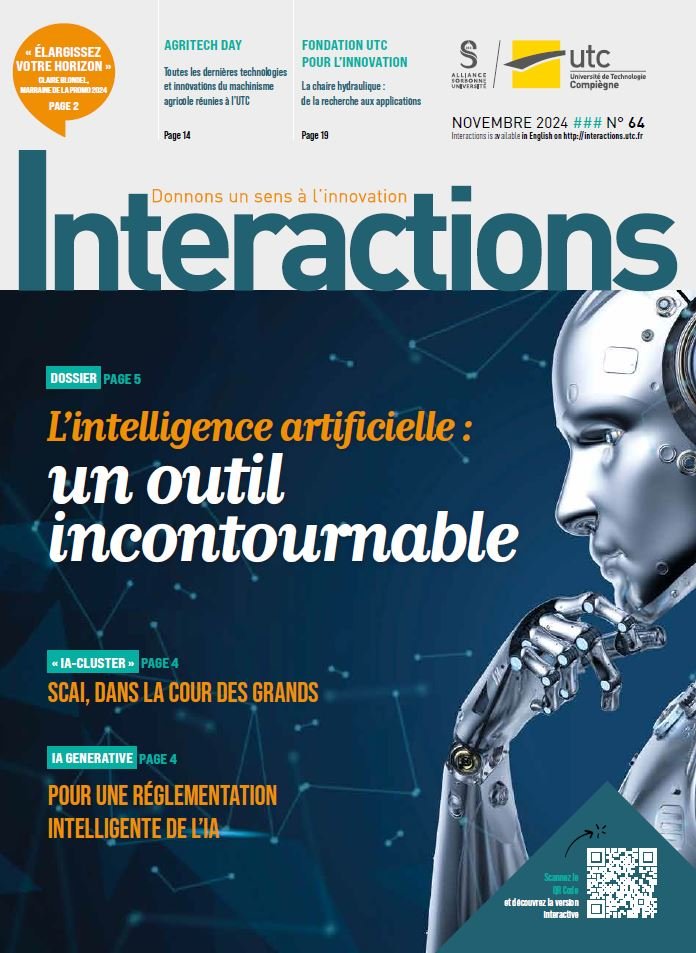A competition — revamping the Seine river-banks

In his 3rd year of the UTC-HUTECH (humanities and technology major), Alexandre Murer took part in a competition organised by Ergapolis (an institute for urbanism studies). The aim assigned was to imagine new uses for three Seine river sites currently abandoned by the locals: a former agricultural plain at Chanteloup-les-Vignes near Paris and the Seine river-banks near Rouen. With his team, baptized ‘Seinographie’, Alexandre came first among the competition laureates. Here is a ‘recap’ on a highly enriching experience, to say the least.
What were your proposals to identify new functions for these unused locations?
“At the Chanteloup site, soils have been contaminated with heavy metals, due to the previous local industrial activities. What we proposed is to sow non-foodstuff crops that in fact soak up the pollutants and at the same time produce eco-materials that can be used in construction work. The general ecopark looks would change each year with crop rotation and the soil quality would be preserved. For the City of Rouen, we chose to propose improvements to some stretches of the Seine riverbanks currently occupied by industrial activities and to an abandoned railroad marshalling yard. We suggested that storage spaces for logistics could be reorganised in a concertation with the industrialists involved, to free space for a bike track. The asphalt covered built-up banks which are not very appealing to strollers, bikers and tourists would become attractive again. As far as the marshalling yard was concerned, we imagined an evolving scenario. By year 2050, this site might accommodate a station on the purported Paris-Normandy high speed train line between Le Havre and Roissy-Charles-de-Gaulle airport just north of Paris. However, as this plan might not come to be, our project”, says Alexandre, “has a number of variation scenarios, depending on whether the Government goes ahead with the HS train-line or not”.
What did the Jury like in your proposals?
“What we did was to devise an original approach we called “Landscape culture”. Our objective was to incorporate the richness of local, natural heritage and the history of this river Seine to go beyond the classic opposition of urban areas and countryside. The solutions we identified, are aimed at preserving a continuum between built-up areas and open landscapes, between the past and the future. Up till now, urbanists have tended to propose completely new rehabilitation plans ex nihilo. In our project we tried to make maximum use of what already exists — to minimise costs- but also to combine local history and acceptability by the locals. We also insisted that there be a concertation, with the various actors involved. In the Chanteloup plain there is even some illegal squatter occupation of certain patches – complex situations like this can only be resolved, we feel, through dialogue”.
How were the team members chosen?
“There were three teams, each with 9 students from each partner school. The specialties represented were highly diverse. Our team had a students in architecture, an urbanist, a sociologist, a landscape planner and two were engineering students. In order to see these members work well together, we adopted a transverse approach for each site. The sociologist and the landscape planner has already a rich professional background. I learned a lot from collaborating with them”.
As one of the team engineers, what was your personal contribution to the project?
“At UTC, we learn how to work in a ‘project mode’ so I made good use of my methodological knowledge to have us progress faster, collectively. For the purpose of making the group work more efficiently, I set up some on-line collaborative tools, made the meeting scheduling formal with systematic agendas and with minute-writing.
The UTC-GSU (urban system engineering) allows to have a very wide, pluridisciplinary, vision of urban planning issues and that led me to situate the future of these three sites in a larger regional and national framework. For instance, it appeared important that our proposals take into account the majors evolutions of transport infrastructures. With the recent concept of a Greater Paris, railroads and rivers/canals will undergo major changes. We tried to imagine a future for these sites where our ideas would prove coherent with the purported global evolutions”.




